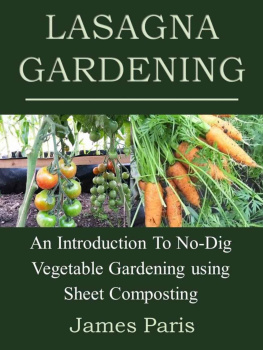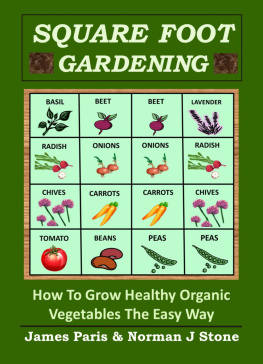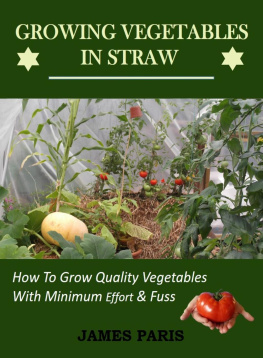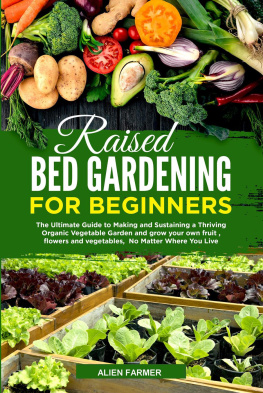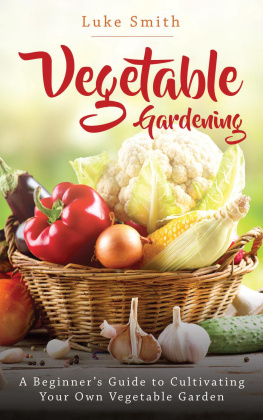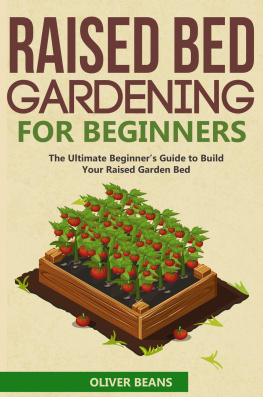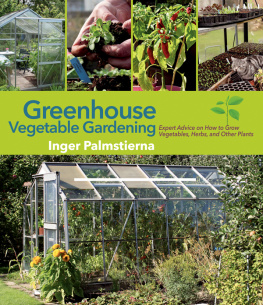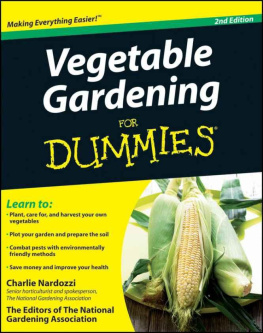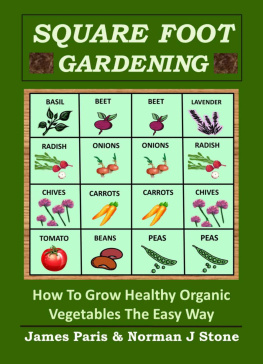All rights reserved. Copyright protected. Duplicating, reprinting or distributing this material in any form, without the express written consent of the author is prohibited.
While reasonable attempts have been made to assure the accuracy of the information contained within this publication, the author does not assume any responsibility for errors, omissions or contrary interpretation of this information, and any damages incurred by that.
The diagrams and instructions included in this book are for general guidance only; the author does not assume any responsibility or liability whatsoever, for what you choose to do with this information.
James Paris is an Amazon Best Selling Author , you can see the full range of books on his Amazon author page at..
Introduction
Firstly to clear up any confusion, lasagna Gardening is known by a number of names including Layer Composting, Layer gardening, Sheet Composting or Lasagna Composting. Call it what you like but it all adds up to the same thing.
Easy weed-free, no-till gardening, that uses up as much organic waste as you can provide, that will in turn produce an abundance of crops at very little expense in both materials and labour.
In can be used alongside or in conjunction with other small gardening ideas, such as Raised Bed Gardening or Container Gardening. And it can be used in any area of the garden that gets sufficient sunshine for plants to grow.
Although some would claim it is a new idea, it is in essence a modern twist on an ancient concept, and has in fact been used under different names or descriptions since ancient times.
However the title Lasagna Gardening alongside the others mentioned are indeed the product of the late 19 th century till now.
In essence a Lasagna garden is a layered rubbish heap filled with organic material, either by accident or design. The ancient Scots for instance referred to this as a Midden. A place where all food waste and animal dung would be dumped.
It was most likely realised that some of the waste vegetables took root and thrived in these conditions, and soon the Midden itself was used to grow vegetable crops.
I myself have known of this method since I was a child, as my parents were both crofters in a remote area of Northern Scotland, near Montrose.
Of course things have changed a lot since then, and the concept of growing healthy organic vegetables in a rubbish heap has evolved into the Lasagna Gardening style (amongst others) as we now know it.
A Popular Movement
No-Dig gardening (a generic term for gardening without the need for heavy digging) comes in many forms, from the Lasagna gardening methods described, to growing vegetables in Straw Bales, Raised Beds, and Containers of all shapes and sizes.
The growth in interest can be attributed to many things, including expediency, the drive to produce Organic healthy food, shortage of garden space, etc. Add to this the fact that many celebrity gardeners are now promoting this method of growing vegetables through the media and internet, and you soon have a popular movement of interested gardeners.
To be clear though, this is not fad gardening. It is ideally suited to the age in which we live. It has indeed many advantages over traditional vegetable gardening, and some would argue that it is an example of re-cycling at its best, and most productive.
Are you ready to grow fantastic crops without all the heavy digging and maintenance of a traditional garden? Then read on, to get many reasons why you should perhaps try it for yourself..
Advantages Of A Lasagna Veggie Garden
Good Reasons For Lasagna Gardening..
1: Excellent Re-cycling: This is a great way to convert any old organic waste into fresh vegetables! Old newspaper, cardboard boxes, kitchen waste, etc. These can all be gathered and used to build up your lasagna vegetable garden. (More on usable materials in later chapters).
2: No Digging Required: This is a classic form of no-till gardening. The materials are simply thrown onto a layered heap, and the seedling or seeds planted in the pile.
The material does not get turned over at all, and the only digging required is the actual act of digging a small hole to plant your seedlings.
3: No Weeding: At least for the first few months of use, the lasagna garden does not require weeding. ,This is mainly due to the fact that you are using clean growing medium, instead of weed-seed infested topsoil.
Some weeds will eventually make their way onto your lasagna garden heap, but these are easily pulled up from the soft composting material.
4: No Fertilizers required: As the layered heap decomposes it creates a nutrient-rich growing medium. This means that you save money and effort as the plants have all the nutrients they need to thrive.
It also means that you can grow 100% organic, chemical-free vegetables for the family!
5: An excellent use of non-productive land: If you are blessed with hard Stoney or otherwise poor soil on which to grow anything, then this method could be just what you are looking for!
The layer garden can be laid out on any piece of ground even concrete! Just mark out your area (more on this later) and pile on your materials to create a super-productive vegetable bed.
I could go on but Im sure you get the idea by now!
In this next chapter I will lay out exactly how to build your own lasagna garden, including more details regarding suitable and unsuitable materials to use.
Building A Lasagna Garden
Now we get down to the nuts & bolts of lasagna gardening, and in particular how to go about the construction itself.
Step 1: Find a suitable position. As mentioned earlier, you do not need to worry about the suitability of the ground with regards to growing your vegetables. This means that with regard to the actual growing , there are really only two main criteria to consider, and they are water supply and natural daylight.
Of course depending on your situation you may have to consider predation by rabbits, deer or other critters that love to munch on fresh vegetables. You may even have to consider possible vandalism or theft.
With regards to the actual plants needs though, sun, water, and nutrients are the main considerations. The nutrients are already taken care of as the heap decomposes, with perhaps the possibility of a top-up with organic fertilizer or tea.
Make sure that you are near to a water supply, as it can be a real drag if you are having to manhandle gallons of water to keep your veggies from expiring!
Most vegetables need a minimum of 8 hours sunlight to grow, so be sure to pick a suitable spot in the yard that is not too shaded to suit your particular choice of vegetables.
Also you should avoid setting up your lasagna garden under over-hanging branches or heavy dense foliage. This will not only take sunshine away from your plants, but can also lead to disease or insect infestation (especially aphids) amongst your vegetables.
Step 2: Collect your materials: What should you include in your lasagna garden? Basically everything that you put into your compost heap can be put into a lasagna garden.
This is a short list of materials that should be included in a compost pile or indeed lasagna garden.

